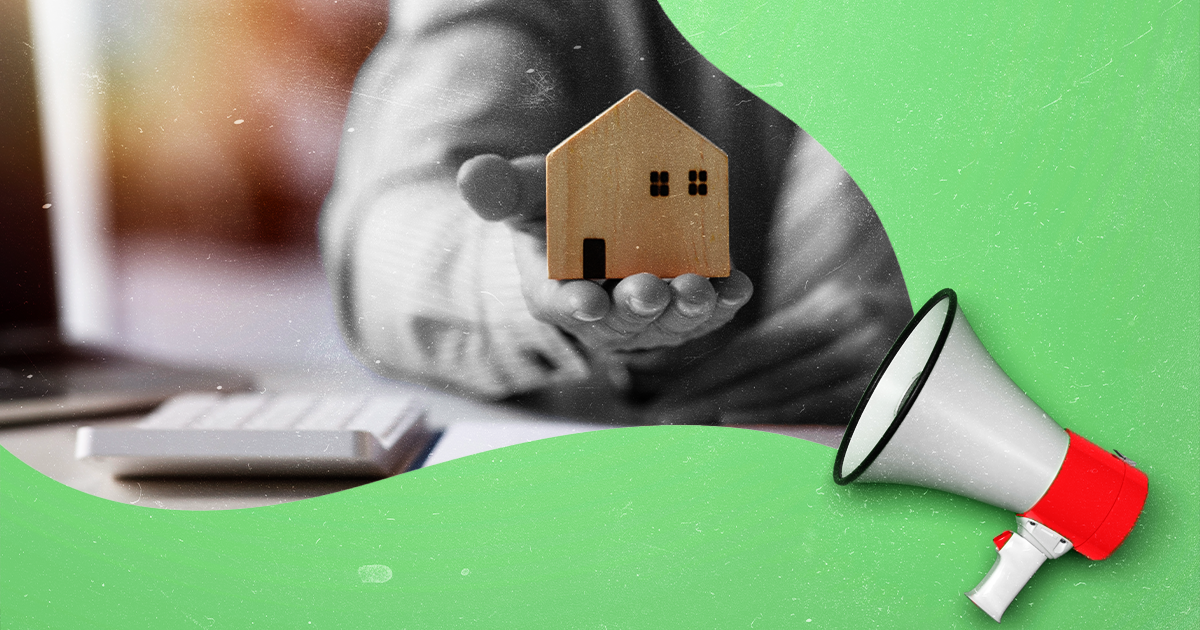Understanding Property Management: What Residents Should Know

Managing multifamily properties, such as apartments, townhomes, and condos, differs from managing single-family homes. These properties house multiple tenants with different needs, expectations, and lifestyles. Successful multifamily property management requires a nuanced approach that balances the interests of both property owners and residents.
How to Choose the Right Apartment for Your Needs
Finding the perfect multifamily apartment that suits your needs requires thoughtful consideration and a clear understanding of your priorities. Whether you're a first-time renter or a seasoned apartment dweller, this guide will walk you through the essential steps to ensure you choose the right multifamily apartment for your lifestyle and preferences.
1. Define Your Budget
Before you start your search, establish a clear budget. Determine how much you can comfortably allocate for monthly rent, considering other monthly expenses like utilities, groceries, and transportation. Stick to your budget to avoid financial strain.
2. Consider Location
Location is a crucial factor in your apartment search. Think about your daily commute, proximity to work, school, or public transportation, as well as the convenience of nearby amenities such as grocery stores, restaurants, parks, and healthcare facilities. Prioritize areas that align with your lifestyle and daily needs.
3. Neighborhood Safety and Dynamics
Beyond basic convenience, prioritize safety. Investigate neighborhood crime rates and the overall community atmosphere. Seek insights into the sense of security within the community, whether through neighborhood watch programs, well-lit streets, or a general sense of cohesion among residents.
4. Amenities Beyond Basics
Consider the diverse amenities available in the area. While grocery stores and restaurants are vital, also look for recreational spaces like parks, fitness centers, or cultural hubs. Evaluate how these amenities align with your hobbies, interests, or daily routines to enhance your overall quality of life.
5. Future Development and Noise Levels
Look into any planned developments or construction projects in the area. While growth can be promising, ongoing construction might mean disturbances. Additionally, consider noise levels—traffic, nightlife, or proximity to busy streets can affect your comfort, especially if you prefer a quieter environment.
6. Pet Policies and Amenities
Multifamily properties commonly have specific guidelines and policies related to pets. These policies often include details about pet restrictions, additional fees or deposits, size or breed limitations, and designated pet-friendly areas within the community, such as dog parks or pet grooming stations. Providing comprehensive information about these pet-related policies and available amenities is essential for residents who are pet owners or considering having pets in their units. Understanding these policies upfront enables residents to make informed decisions about their living situation and ensures compliance with the property's regulations.
7. Promoting Green Living and Sustainability Initiatives
Multifamily properties increasingly incorporate sustainability practices to minimize environmental impact. Property managers implement initiatives such as recycling programs, energy-efficient appliances, and water-saving measures to promote eco-friendly living. These efforts not only contribute to a greener environment but also reduce utility costs for residents while supporting a more sustainable community.
8. Security Measures and Emergency Protocols
Ensuring resident safety is a top priority for multifamily properties. Security measures include key fob access, surveillance systems, and well-defined emergency protocols for various situations like fires, natural disasters, or security breaches. These measures aim to create a secure living environment, giving residents peace of mind and confidence in their safety within the community.
9. Resident Responsibilities and Etiquette
Residents play a crucial role in maintaining a harmonious community. Adhering to noise ordinances, proper waste disposal, and respecting shared spaces are fundamental responsibilities. Understanding and following community rules and guidelines ensure a pleasant living experience for all residents while fostering a respectful environment.
10. Insurance Requirements
Multifamily property living often requires specific insurance coverage. Residents might need renter's insurance to protect personal belongings. Highlighting the importance of such insurance and providing guidance on the types of coverage needed can assist residents in safeguarding their assets and complying with property management requirements.
11. Outline Your Must-Have Features
Create a list of non-negotiable features and amenities that you need in your multifamily apartment. This could include the number of bedrooms and bathrooms, pet-friendliness, in-unit laundry, parking availability, or specific appliances. Be prepared to compromise on some preferences, but prioritize your must-haves.
12. Evaluate Safety and Security
Safety should be a top priority. Research the crime rates in the area and inquire about the apartment complex's security measures, such as locked entrances, surveillance cameras, and well-lit common areas. Feeling secure in your new home is essential for peace of mind.
13. Assess Apartment Size and Layout
Consider the size and layout of the apartment. Does it provide adequate living space for your needs, or will you feel cramped? Think about your furniture and how it will fit into the area. Visualize your daily routines in the layout to ensure it's a good fit.
14. Review Lease Terms and Policies
Carefully review the lease terms and rental policies. Pay attention to the length of the lease, the security deposit, rent payment methods, and any penalties for breaking the lease. Understand the rules and regulations of the apartment complex, especially if you have specific requirements or preferences.
15. Community Engagement and Management Involvement
Understanding how property management fosters community engagement is crucial. Inquire about management initiatives, such as organized events, resident forums, or platforms for feedback. A responsive and engaged management team often contributes to a more cohesive and enjoyable community experience.
Maximizing Small Spaces: Decorating Tips for Multifamily Apartments
Living in a multifamily apartment comes with its unique challenges, especially when it comes to space. However, with a bit of creativity and thoughtful planning, you can transform even the smallest of apartments into a stylish and functional living space. Below, we will explore decorating tips and strategies to help you maximize your small multifamily apartment.
1. Declutter and Simplify
Before diving into decorating, start with decluttering. Pare down your possessions and keep only what you truly need and love. A clutter-free space not only looks more spacious but also feels more relaxing. Consider donating or selling items you no longer use.
2. Choose Light Colors
Light, neutral colors can make a small apartment feel brighter and more open. Opt for soft shades of white, beige, or pastels for walls, furniture, and decor. These colors reflect light and create an illusion of space.
3. Use Multi-Functional Furniture
Invest in furniture that serves multiple purposes. A sofa with built-in storage, a fold-out dining table, or a bed with drawers underneath can maximize both comfort and storage in a small apartment. Look for space-saving solutions that fit your needs.
4. Embrace Vertical Space
Utilize vertical space to your advantage. Install wall-mounted shelves, bookcases, or floating cabinets to free up floor space. Vertical storage not only adds functionality but also draws the eye upward, making the room appear taller.
5. Mirror Magic
Mirrors can work wonders in small spaces. They reflect light and create the illusion of depth, making the room seem more spacious. Consider placing a large mirror on one wall or using mirrored furniture to amplify the effect.
6. Opt for Minimalist Decor
Less is often more in small apartments. Choose decor items that have a purpose and avoid excessive ornamentation. A few well-placed, meaningful decorations can make a stronger impact than cluttered decor.
7. Create Zones
Divide your apartment into functional zones. Use area rugs, different lighting, or furniture arrangements to distinguish between living, dining, and sleeping areas. This helps define spaces and prevents them from feeling cramped.
8. Make Use of Natural Light
Maximize natural light by keeping window treatments minimal. Use sheer curtains or blinds that can be fully opened during the day. Natural light not only brightens the space but also makes it feel more open and inviting.
9. Downsize Your Furniture
Consider the scale of your furniture in relation to the apartment size. Smaller, streamlined furniture pieces can make the space feel less crowded. Avoid oversized or bulky furniture that overwhelms the room.
Budgeting for Multifamily Living: Rent, Utilities, and Other Expenses
Budgeting for multifamily living is a vital step in achieving financial stability and enjoying a comfortable lifestyle. By carefully assessing your income, categorizing your expenses, and prioritizing savings, you can create a budget that allows you to manage your finances effectively while enjoying your multifamily apartment to the fullest.
1. Determine Your Total Monthly Income
Before creating a budget, you need to know how much money you have coming in each month. This includes your salary, wages, any rental income if you have roommates, and any other sources of income.
2. Calculate Your Fixed Expenses
Fixed expenses are those that remain relatively constant each month. These typically include:
- Rent: Your rent is the most significant fixed expense. Ensure that your rent payment fits comfortably within your budget, ideally not exceeding 30% of your monthly income.
- Utilities: Calculate an estimate for monthly utility costs, including electricity, water, gas, and trash removal. These costs may vary seasonally but are generally predictable.
- Insurance: If required, factor in renter's insurance to protect your personal belongings.
- Parking: If you own a vehicle and pay for parking, include this cost in your budget.
3. Allocate Funds for Variable Expenses
Variable expenses are those that can fluctuate from month to month. These might include:
- Groceries: Create a grocery budget based on your dietary preferences and meal planning. Stick to a list to avoid impulse purchases.
- Transportation: Account for transportation costs such as gas, public transit fares, or rideshare services.
- Healthcare: Set aside funds for health insurance premiums, copayments, and any out-of-pocket medical expenses.
- Entertainment: Budget for entertainment expenses like dining out, streaming services, and recreational activities.
- Miscellaneous: Leave room in your budget for unexpected or irregular expenses, such as repairs or emergencies.
4. Establish a Savings Plan
Saving money is essential for financial security and achieving your long-term goals. Allocate a portion of your income to savings each month. Consider building an emergency fund that covers three to six months' worth of living expenses.
5. Track Your Spending
Use budgeting tools, apps, or spreadsheets to track your spending. This helps you stay accountable and identify areas where you might be overspending. Adjust your budget as needed to stay on track.
6. Be Mindful of Debt
If you have student loans, credit card debt, or other loans, factor in monthly payments in your budget. Reducing and eventually eliminating debt should be a financial goal.
Conclusion
Creating a successful amenity package requires a thoughtful balance between cost-effectiveness, resident needs, and current trends. By prioritizing amenities that enhance the quality of life without significantly increasing rental costs, property managers can create a space that fosters resident satisfaction, promotes long-term tenancy, and strengthens the overall value proposition of the property. Remember, it's not just about the amenities themselves, but the positive psychological impact they have on residents. When residents feel comfortable, happy, and secure in their living environment, they are more likely to stay put and contribute to a thriving community.




